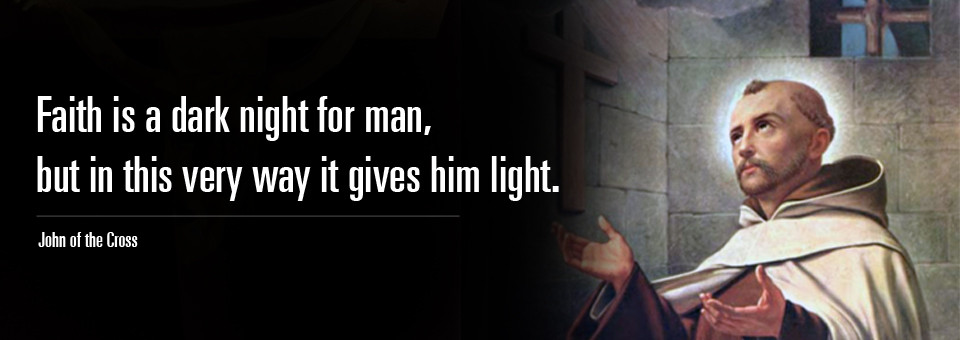
The Translator of our Saints into English
Evey beginning has an end. Fr.
Kieran passed away just shy of his 91st birthday this past Saturday, the Feast
of the Presentation of the Lord. He died in Washington DC. He is most remembered as one-half of the duo of friars who
translated the works of St. John of the Cross and St. Teresa of Ávila into
English. He was a charming, witty priest. With a tremendous love for anything
Carmelite.
The
Beginnings
Thomas
Morgan Kavanaugh was born in Milwaukee, Wisconsin, on 19 February 1928. After
attending Archbishop Messmer High School in Milwaukee, he entered the novitiate
of the Discalced Carmelite friars in Brookline, Massachusetts, in 1946. During
his novitiate year, the Brookline community received a pastoral visitation from
the order’s Spanish general, Fr. Silverio of St. Teresa, the great Carmelite
historian and editor of the writings of Sts. Teresa and John upon whose
scholarship Kieran would draw heavily in later years. On 27 August 1947, he
professed his first vows of poverty, chastity, obedience, and humility, taking
the religious name Kieran of the Cross after the saintly Irish founder and
abbot of Clonmacnois, a famous center of holiness and learning in sixth-century
Ireland. Following the novitiate, he returned to his native state to begin his
studies for the priesthood in the Carmelite house of philosophy at Holy Hill,
Wisconsin, forty miles northwest of Milwaukee.
Kieran’s student master
at Holy Hill was Fr. John Clarke, who would later join him in the translation
ministry with his translations of the writings of St. Thérèse of Lisieux.
In August 1950, Kieran
made his solemn profession of vows at Holy Hill’s Shrine of Mary, Help of
Christians. His superiors then sent him to Rome for theology studies in the
Discalced Carmelite International College of St. Teresa. On the college’s
faculty at this time were Gabriel of St. Mary Magdalene, the renowned professor
of spiritual theology, and the young Tomás Alvarez who would become one of the
world’s leading experts on St. Teresa. Among the students were Spaniards
Federico Ruiz, Eulogio Pacho, and José Vicente Rodríguez, all later to
distinguish themselves as St. John of the Cross scholars. In Rome, Kieran wrote
“The Christology of St. John of the Cross” for his licentiate in sacred
theology and was ordained to the priesthood on 26 March 1955. He was
twenty-seven years old.
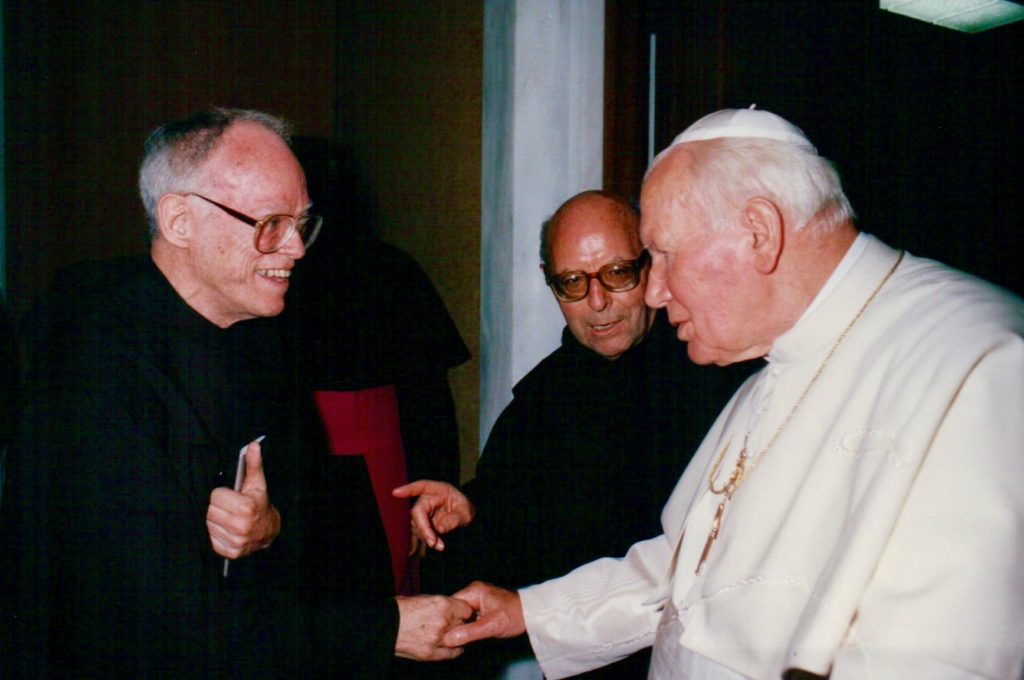
Before
leaving Europe, Fr. Kieran spent one year in the desert monastery of the Discalced
Carmelites in Roquebrune-sur-Argens in southern France. A “desert” in the
Carmelite tradition is a community of friars devoted exclusively to the
contemplative life without involvement in external pastoral ministry. Its
purpose is to preserve within the order both the early eremitical life of first
hermits on Mt. Carmel in the Holy Land during the thirteenth century and the
contemplative spirit of the sixteenth-century Spanish Carmelite reformers, St.
Teresa of Avila and St. John of the Cross. At Roquebrune, situated in the rough
foothills above the French Riviera near Fréjus and Saint-Raphaël, where the
French-speaking provinces of the Discalced Carmelites maintain a desert in the
chapel and hermitages of a former Camaldolese monastery, Kieran drank deeply of
Carmel’s contemplative waters.
Back in the
States
Fr.
Kieran returned to the United States in 1957. Shortly thereafter he was
assigned to the College of Our Lady of Mt. Carmel, the Discalced Carmelite
house of theology in Washington D.C., to teach both dogmatic and spiritual
theology and to be the director of students. In the Washington community at
that time was Fr. Otilio Rodriguez, O.C.D. Newly arrived from Spain, a
protégé of Fr. Silverio, Fr. Otilio was a historian of the Carmelite order
and dedicated student of the writings of St. Teresa of Avila. Eager to see the
Teresian Carmelite heritage spread in the United States, Fr. Otilio recommended
to Fr. Kieran that he translate the writings of St. John of the Cross for
Americans. Initially, Kieran resisted, claiming insufficient knowledge of
Spanish. After Otilio reassured Kieran that St. John’s Spanish is not difficult
and that, in addition, he would help him, the two friars began the translation
in the fall of 1957.
The
translation proved more difficult than Fr. Otilio imagined. What he thought
could be completed in a few months took five years. Nonetheless, in 1964
Doubleday, the large secular publishers in New York, together with Thomas
Nelson in England, published
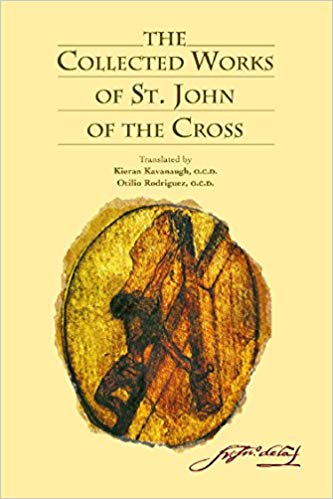
The
Collected Works of St. John of the Cross, translated by Kieran Kavanaugh,
O.C.D., and Otilio Rodriguez, O.C.D, with introductions by Kieran Kavanaugh. For the first time,
readers in the United States had a modern American translation of the complete
writings of the Spanish mystical doctor of the church in one 740-page volume.
In addition, Kavanaugh and Rodriguez’s work reflected the most recent research
in the life and writings of St. John, a benefit not present in the earlier
translations by the Englishmen David Lewis in the second half of the nineteenth
century or E. Allison Peers in the 1930s. Also, being Carmelites themselves,
the ones for whom John originally wrote, the translators had insights into the
saint’s words that came from living daily the way of life he was promoting in
his writings.
In
1979, the Institute of Carmelite Studies published a second edition of the
translation that included two hitherto unknown autograph letters of St. John
discovered after 1964. In addition to stylistic and editorial improvements to
the original translation, the translators also added a twenty-two page topical
index and an index of Sacred Scripture. A decade later, in preparation for the
fourth centenary of the death of St. John of the Cross in 1991, Fr. Kieran
prepared a revised edition of the translation incorporating the results of the
latest sanjuanist scholarship, adding footnotes that included helpful
cross-references and a glossary of St. John’s terminology. He also revised the
text, replacing the generic masculine with gender-neutral language, while
preserving John’s references to God and Christ in masculine nouns and pronouns.
Over the last forty years, this translation in its three editions has sold an
average of 360 copies a month.
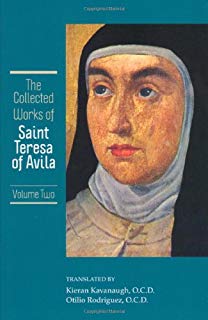
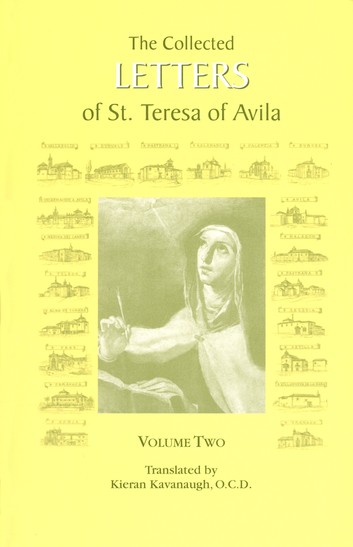
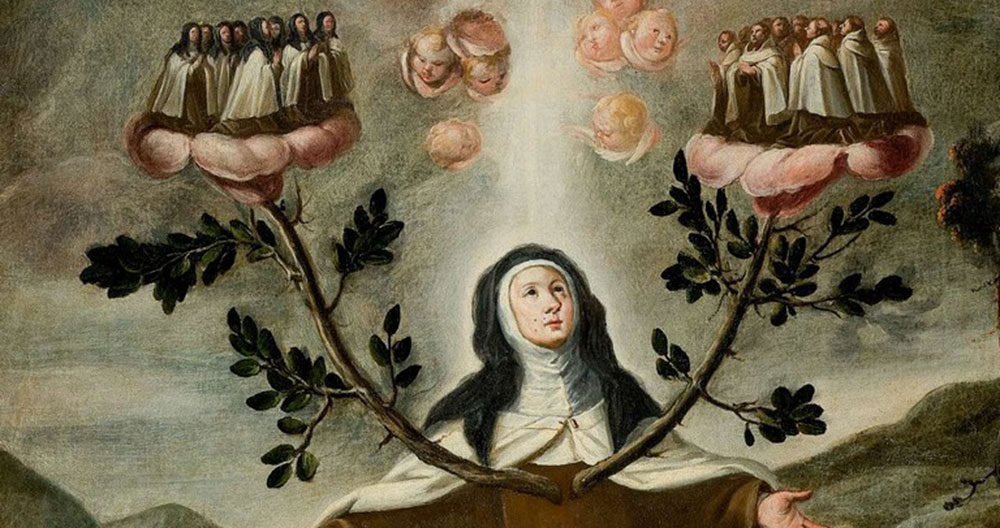

Translations
With
their translation of St. John widely accepted by both scholar and general
reader, Frs. Kieran and Otilio turned next to translating the writings of St.
Teresa into American English. In the years since they began their
collaboration, the Discalced Carmelites had closed their theological college in
Washington and Kieran was now teaching spiritual theology at Catholic
University of America. With the decision in 1972 to translate St. Teresa, he
left the university to concentrate on his collaboration with Fr. Otilio in the
challenging task of translating St. Teresa, a writer more prolific and
complicated than John of the Cross. The Institute of Carmelite Studies
published their translation of The Book of Her Life, together with her
Spiritual Testimonies and Soliloquies, in 1976. This was followed in 1980 with
their translation of The Way of Perfection, Meditations on the Song of Songs,
and The Interior Castle. Finally, The Book of Her Foundations and minor
writings, including her poetry, appeared in 1985. In each of these three volumes,
Kieran wrote the introductions that provided readers with valuable historical
and doctrinal background for understanding St. Teresa.
In
the late 1960s, Fr. Otilio was called to Rome to head the Teresian Historical
Institute at the Discalced Carmelites’ International College, now named the
Teresianum, where he was also later to serve as rector. He and Kieran continued
their collaboration by mail and during the summer months when Otilio returned
home to the United States. From this point on, however, Kieran assumed more of
the responsibility for the translations, especially as Otilio’s health began
gradually to fail. When Otilio died in 1994 at the age of 83, his dream of
promoting the Teresian heritage in the United States was largely fulfilled. At
the time of his death, people not only in America but also throughout the
entire English-speaking world were reading the Kavanaugh and Rodriguez
translations of the writings of St. Teresa of Avila and St. John of the Cross.
Still,
one significant part of St. Teresa’s literary legacy— her letters— remained to
be translated into American English. Teresa wrote thousands of personal
letters, of which some 468 still exist. Considered by John Tracy Ellis, the
late American church historian, to rank among the masterpieces of Catholic
world literature, these letters reveal the woman Teresa in all her humanness in
ways that her writings on prayer and Carmelite life do not. Now without Fr.
Otilio, but with his skills as a translator finely honed and his reputation as
a Teresian scholar firmly established, Kieran began in the early nineties to
translate St. Teresa’s letters. He has been assisted by Mrs. Tina Mendoza, who
has compared his translation of each letter with the original Spanish,
frequently suggesting more accurate renderings, and Dr. Carol Lisi, who
provided editorial assistance in preparing the manuscript for publication. The
first volume, consisting of 224 letters written by Teresa between 1546 and
1577, together with an introduction and brief biographical sketches of her
correspondents and other persons mentioned in her letters, appeared in 2001. In
2007, ICS Publications will publish the second volume containing the
translation of St. Teresa’s remaining letters, thus concluding the major work
of Kieran’s priestly life, fifty years devoted to translating over 2500 pages
of the complete works of John of the Cross and Teresa of Avila into standard
American English.
An older
brother
To
the members of his province, community, and especially, the Institute of
Carmelite Studies, Kieran has become an older brother who daily shares his life
with us, advising, encouraging, supporting, and inspiring us with his quiet
presence, wise words, and good example. His legacy to our order will
undoubtedly be his fidelity to the prescription in the ancient Carmelite Rule
of St. Albert that calls each of us “to remain in or near one’s cell,
meditating day and night on the Law of the Lord and watching in prayer unless
otherwise justly occupied.” Kieran’s fidelity to this directive has been a main
source of his productive life. Although he obtained a licentiate in theology
during his early years in Rome and taught spiritual theology for several years
at Catholic University of America, Kieran’s work has not been centered
primarily in academia. Rather, his scholarship, translations, writings, and
prepared conferences, preaching, and retreats have come from his devotion to
his cell. He has thus left an example for us of the immense good for the order
and the Church that results from following the ancient monastic custom of
prayer and study in the quiet of one’s own cell.
Fr.
Kieran passed away on the Feast of the Presentation of the Lord, Feb. 2, 2019.
He was interred in the Carmelite cemetery at Holy Hill, WI on
Thursday, Feb. 14 2019
